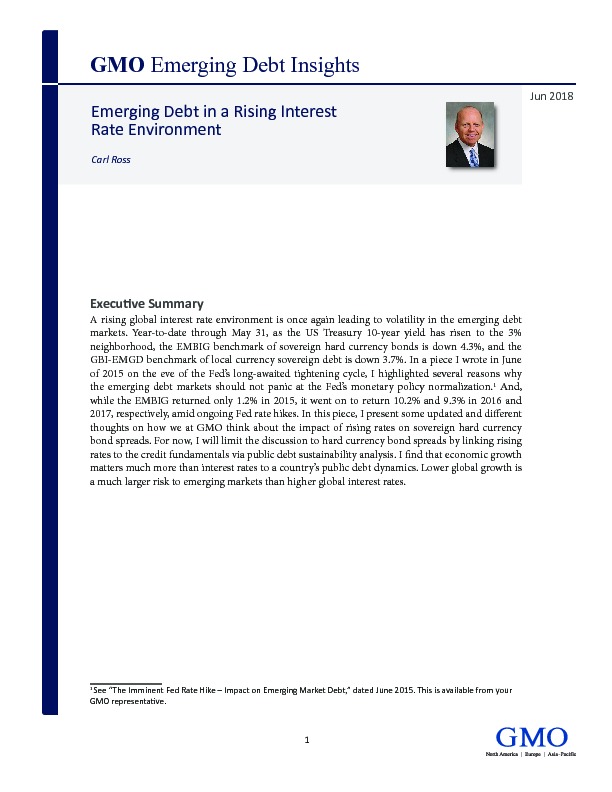Emerging Debt in a Rising Interest Rate Environment

A rising global interest rate environment is once again leading to volatility in the emerging debt markets. Year-to-date through May 31, as the US Treasury 10-year yield has risen to the 3% neighborhood, the EMBIG benchmark of sovereign hard currency bonds is down 4.3%, and the GBI-EMGD benchmark of local currency sovereign debt is down 3.7%. In a piece, I wrote in June of 2015 on the eve of the Fed’s long-awaited tightening cycle, I highlighted several reasons why the emerging debt markets should not panic at the Fed’s monetary policy normalization. And, while the EMBIG returned only 1.2% in 2015, it went on to return 10.2% and 9.3% in 2016 and 2017, respectively, amid ongoing Fed rate hikes. In this piece, I present some updated and different thoughts on how we at GMO think about the impact of rising rates on sovereign hard currency bond spreads. For now, I will limit the discussion to hard currency bond spreads by linking rising rates to the credit fundamentals via public debt sustainability analysis. I find that economic growth matters much more than interest rates to a country’s public debt dynamics. Lower global growth is a much larger risk to emerging markets than higher global interest rates.
Om dit artikel te lezen heeft u een abonnement op Investment Officer nodig. Heeft u nog geen abonnement, klik op "Abonneren" voor de verschillende abonnementsregelingen.





